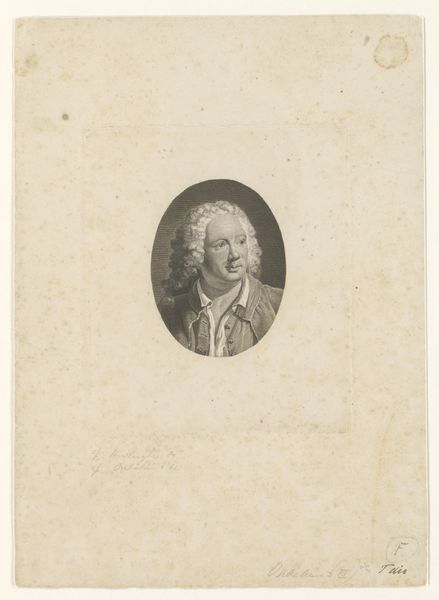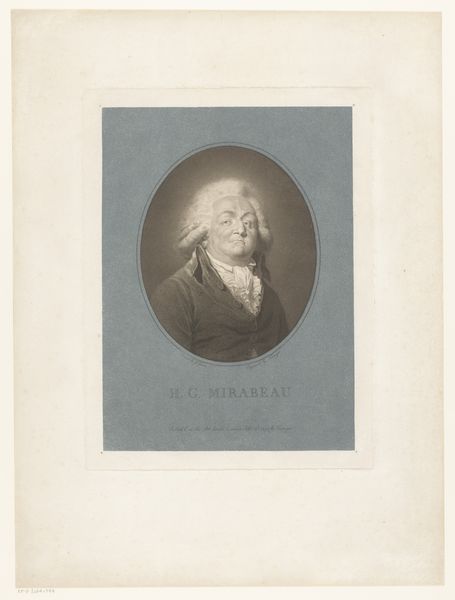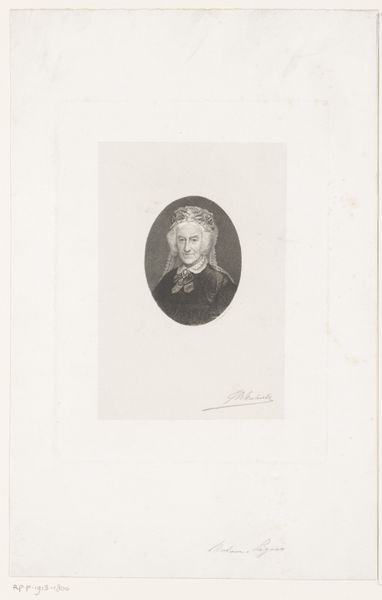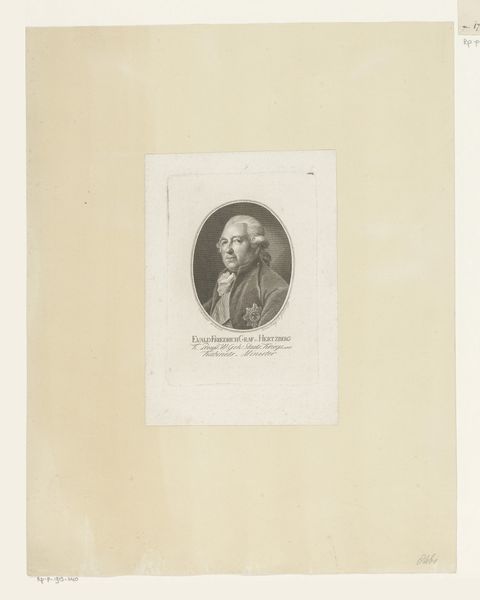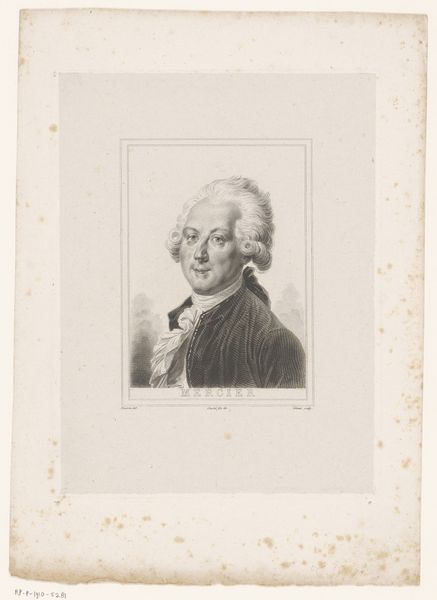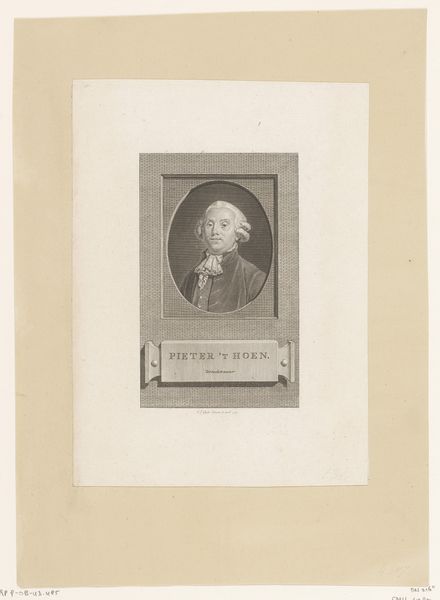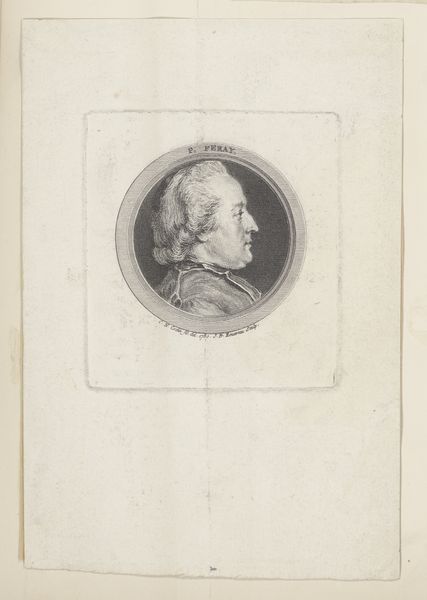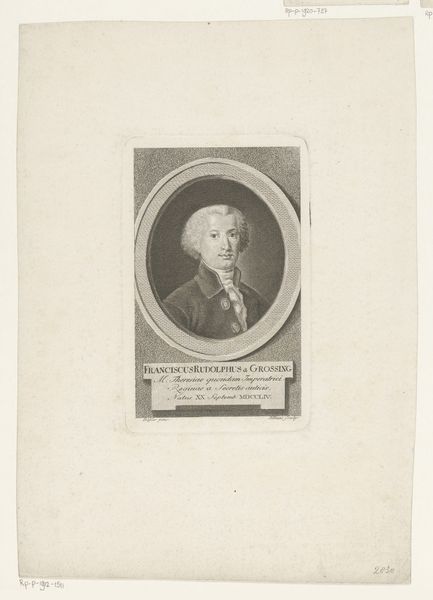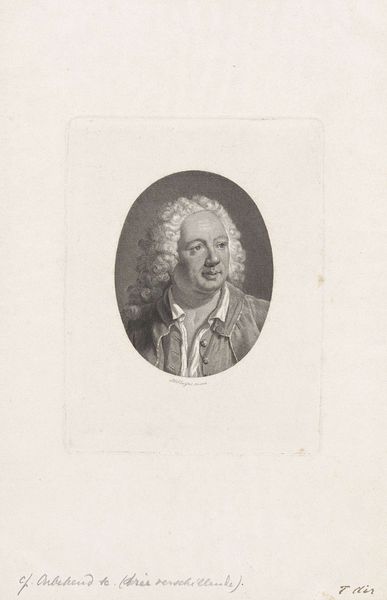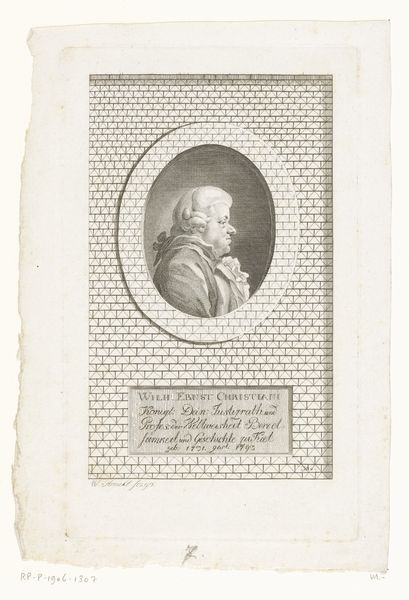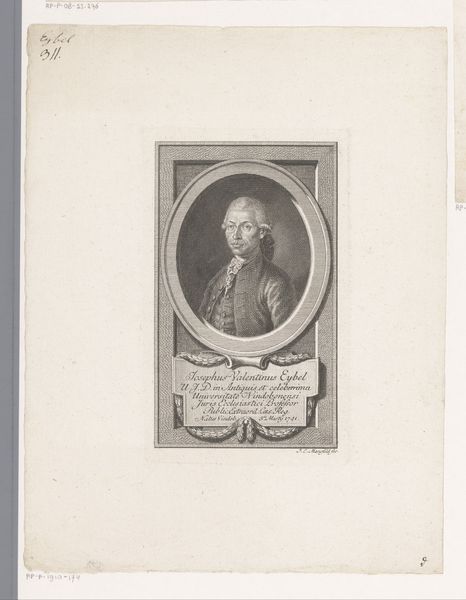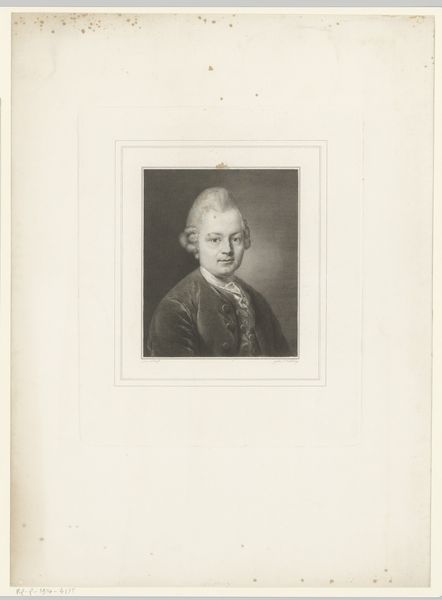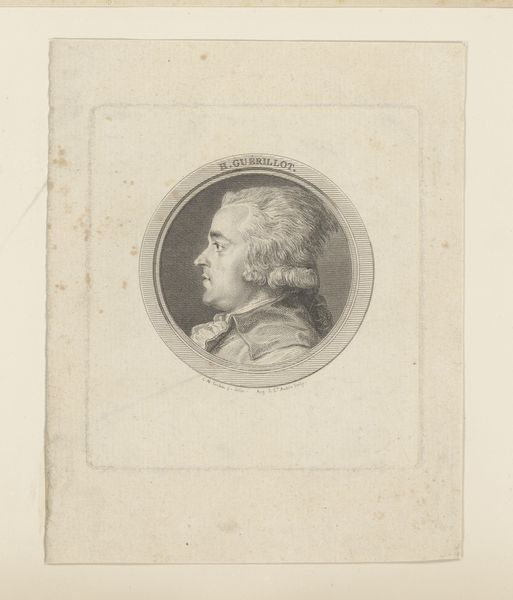
Dimensions: height 174 mm, width 143 mm
Copyright: Rijks Museum: Open Domain
Editor: This is a print from 1858 of Jean Baptiste Rousseau, a French poet who lived from 1671 to 1741. It's quite striking – a baroque portrait done in a crisp, linear style. I'm curious about its purpose so far after Rousseau's death. How do you interpret this work? Curator: It's an engraving after a portrait, so not an original artwork *by* Rousseau. We need to consider its function in 1858. Portrait engravings were often made to disseminate images of prominent figures, functioning almost like celebrity photographs today. Editor: So, this image served a similar purpose to a celebrity magazine cover of today? Curator: Precisely. Its distribution reinforces the canon of French literature, and perhaps promotes particular political or social values tied to Rousseau's image. The choice to reproduce it in 1858 may also signal a revival of interest in Rousseau or his ideas, or perhaps reinforce French cultural identity amidst political changes of the time. Editor: That's fascinating. I never thought about prints like this as actively shaping cultural memory. Does the fact that it's a print, and therefore easily reproducible, influence its social function? Curator: Absolutely. The reproducibility democratizes the image, making it accessible to a wider audience beyond the elite who might commission a painted portrait. The print medium itself becomes a tool for constructing and disseminating cultural narratives. Editor: I see, the choice of medium itself has inherent socio-political implications. This gives me a whole new appreciation for engravings! Curator: Exactly! Analyzing art through this lens unveils its broader social role.
Comments
No comments
Be the first to comment and join the conversation on the ultimate creative platform.
